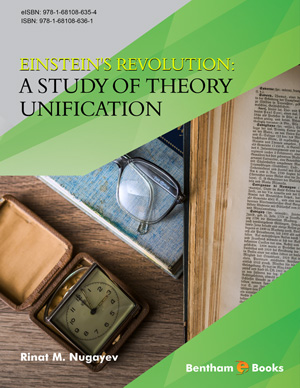Acknowledgements
Page: iv-iv (1)
Author: Jun-Pu Li and Qing-Hua Qin
DOI: 10.2174/9781681088983121010002
Introduction to Radial Basis Function Method
Page: 1-17 (17)
Author: Jun-Pu Li and Qing-Hua Qin
DOI: 10.2174/9781681088983121010003
PDF Price: $15
Abstract
This chapter presents an overview of the radial basis function (RBF) method and its application in wave propagation problems. First, the historical background development of the radial basis function method is reviewed. Then, applications of RBF to problems of large scale high-frequency wave propagation are described. Strategies are presented for reducing sampling frequency and computational and storage complexity while maintaining high stability, accuracy, and efficiency. This is followed by a list of methods using the RBF in simulating wave propagation problems, including the boundary element method, method of fundamental solutions, singular boundary method, boundary knot method, method of moments, and fast multipole method.
Singular Boundary Method Analysis of Obliquely Incident Water Wave Passing through Submerged Breakwater
Page: 18-29 (12)
Author: Jun-Pu Li and Qing-Hua Qin
DOI: 10.2174/9781681088983121010004
PDF Price: $15
Abstract
Further to the introduction of radial basis function (RBF) methods given in Chapter 1, this chapter presents a brief description of the application of RBF to twodimensional Helmholtz problems. The background of this chapter is that, in ocean engineering, a submerged breakwater have the advantages of allowing water circulation, permitting fish passage, and providing economic protection. Therefore, such breakwaters have been widely applied to reduce the energy of transmitted water waves. Under the assumption of linear wave theory, the simulation of a water wave passing through a submerged breakwater can be simplified for solving modified Helmholtz equations. In this chapter, the analysis of an oblique incident water wave passing through a submerged breakwater is taken as the engineering background for investigating the use of the singular boundary method for two-dimensional modified Helmholtz problems. The origin intensity factors for the 2-D Laplace equation, Helmholtz equation, and modified Helmholtz equation are listed.
Singular Boundary Method for Three-Dimensional Low and Middle Frequency Acoustic Problems
Page: 30-50 (21)
Author: Jun-Pu Li and Qing-Hua Qin
DOI: 10.2174/9781681088983121010005
PDF Price: $15
Abstract
As an extension of the methods presented in Chapter 2, this chapter takes acoustic problems as the physical background to apply the singular boundary method to the three-dimensional Helmholtz equation. Based on the Burton-Miller formulations, the Burton-Miller singular boundary method is constructed to deal with the non-uniqueness difficulties at resonance frequency. Two seta of origin intensity factors based on the subtraction and adding-back technique are derived. In addition, for efficient evaluation of near-boundary and boundary solutions of the Helmholtz equation with wideband wavenumbers, this chapter proposes a regularized singular boundary method and derives a set of near intensity factors based on the subtraction and adding-back technique.
RBF Based on the Modified Fundamental Solutions for High-Frequency Acoustic Problems
Page: 51-68 (18)
Author: Jun-Pu Li and Qing-Hua Qin
DOI: 10.2174/9781681088983121010006
PDF Price: $15
Abstract
The conception of modified fundamental solution of the 3-D Helmholtz equation is described in this chapter. Based on the modified fundamental solution, a modified singular boundary and a dual-level method of fundamental solutions are constructed. The merits of the proposed methods are that they inherit the high efficiency and accuracy of the boundary knot method and the method of fundamental solutions, whereas the high stability of the singular boundary method is not affected. For illustration, several acoustic radiation and scattering examples are investigated. Numerical experiments show that the present radial basis function (RBF) method based on the modified fundamental solutions only needs to set about 3 degrees of freedom in one wavelength per direction to produce highly accurate solutions for three-dimensional acoustic problems. At the end of this chapter, the influence of the fictitious boundary on results is analyzed in an appendix.
Modified Dual-Level Fast Multipole Algorithm For Three-Dimensional Potential Problems
Page: 69-90 (22)
Author: Jun-Pu Li and Qing-Hua Qin
DOI: 10.2174/9781681088983121010007
PDF Price: $15
Abstract
A modified dual-level fast multipole algorithm is constructed for analyzing three-dimensional (3D) potential problems. The core idea of the method is to use a dual-level structure for handling the excessive storage requirement and illconditioning caused by the fully populated interpolation matrix. The algorithm uses the fast multipole method to expedite matrix vector multiplication processes. The boundary element method (BEM) is used as the basic method in the algorithm. The 3D potential model is used as the physical background to illustrate this novel algorithm. The complexity analysis shows that the method has O(N) operations and low memory requirements for a 3D potential model.
Modified Dual-Level Fast Multipole Algorithm Based on the Burton-Miller Formulation for Large- Scale Sound Field Analysis
Page: 91-108 (18)
Author: Jun-Pu Li and Qing-Hua Qin
DOI: 10.2174/9781681088983121010008
PDF Price: $15
Abstract
This chapter extends the modified dual-level fast multipole algorithm (MDFMA) to the field of acoustics. The Burton-Miller formulation is applied to overcome non-uniqueness at internal resonance. The MDFMA based on the Burton- Miller formulation is here tested by a series of complex engineering cases. It is observed that the MDFMA performs 44% faster than COMSOL in the analysis of acoustic scattering characteristics of an A-320 aircraft, and 56% faster than the fast multipole boundary element method in the analysis of underwater acoustic scattering characteristics of the Kilo-class submarine.
Time-Dependent Singular Boundary Method for Scalar Wave Equation
Page: 109-120 (12)
Author: Jun-Pu Li and Qing-Hua Qin
DOI: 10.2174/9781681088983121010009
PDF Price: $15
Abstract
This chapter presents a time-dependent singular boundary method for solving two- and three-dimensional scalar wave equations. In contrast with previous chapters focused on frequency domain computation, this chapter focuses on the solution of the scalar wave equation instead of the Helmholtz equation. The timedependent fundamental solution is used here as the basis function. Considering the difference between two- and three-dimensional wave equations, the time-dependent fundamental solution is integrated along with time for solving two-dimensional scalar wave equations. A time-successive evaluation approach without complex mathematical transforms is applied for three-dimensional wave equations.
Regularized Method of Moments for Time- Harmonic Electromagnetic Scattering
Page: 121-134 (14)
Author: Jun-Pu Li and Qing-Hua Qin
DOI: 10.2174/9781681088983121010010
PDF Price: $15
Abstract
This chapter extends the application of the theory of the radial basis function method to computational electromagnetics. Several key mechanical issues involved in the process of high-precision calculation of electromagnetic scattering are discussed. A regularized method of moments based on the modified fundamental solution of the three-dimensional Helmholtz equation is constructed in this chapter. The origin intensity factor is used to evaluate the singular term of interpolation matrix. Non-uniqueness at internal resonance is avoided by using the modified fundamental solution as the basis function. The regularized method of moments reduces the consumed CPU time by half compared to the traditional method of moments, while stability and accuracy are not affected. Experiments indicate that the regularized method of moments can accurately evaluate the radar cross section of perfect conducting scatter over all frequency ranges.
Recent Advances and Emerging Applications of the Radial Basis Function Method for Simulation of Large-Scale and High-Frequency Sound Wave Propagation
Page: 135-150 (16)
Author: Jun-Pu Li and Qing-Hua Qin
DOI: 10.2174/9781681088983121010011
PDF Price: $15
Abstract
With the rapid development of computer technology, numerical simulation has become the third scientific research tool besides theoretical analysis and experimental research. As the core of numerical simulation, the construction of efficient, accurate and stable numerical methods to simulate complex scientific and engineering problems have become a key issue in the field of computational mechanics. This chapter outlines the application of the radial basis function method for the simulation of large-scale and high-frequency sound wave propagation. All the techniques and methods discussed in the book are reviewed in this chapter. This collection can provide a reference for the simulation of other more complex wave propagation.
Introduction
This book details the development of techniques and ideas from the radial basis function. It begins with a mathematical description of the basic concept of radial function method with chapters progressively delving into the derivation and construction of radial basis functions for large-scale wave propagation problems including singularity problems, high-frequency wave problems and large-scale computation problems. This reference, written by experts in numerical analysis, demonstrates how the functions arise naturally in mathematical analyses of structures responding to external loads. Readers are also equipped with mathematical knowledge about the radial basis function for understanding key algorithms required for practical solutions. Key features: - Introduces basic concepts of radial basis function methods - Provides detailed derivations of several radial basis functions - Explains complex problems using simple language - Contains a wide range of numerical examples to demonstrate applications of relevant functions - Combines the radial basis function with other known numerical methods (boundary element methods and differential equations). - Includes references and appropriate chapter appendices - Includes MATLAB codes for origin intensity factors and nearly singular factors for radial basis calculations The book is designed to make information about radial basis function methods more accessible to research scientists, professional engineers and postgraduate students, with a specific focus on large-scale wave propagation problems.








.jpg)




